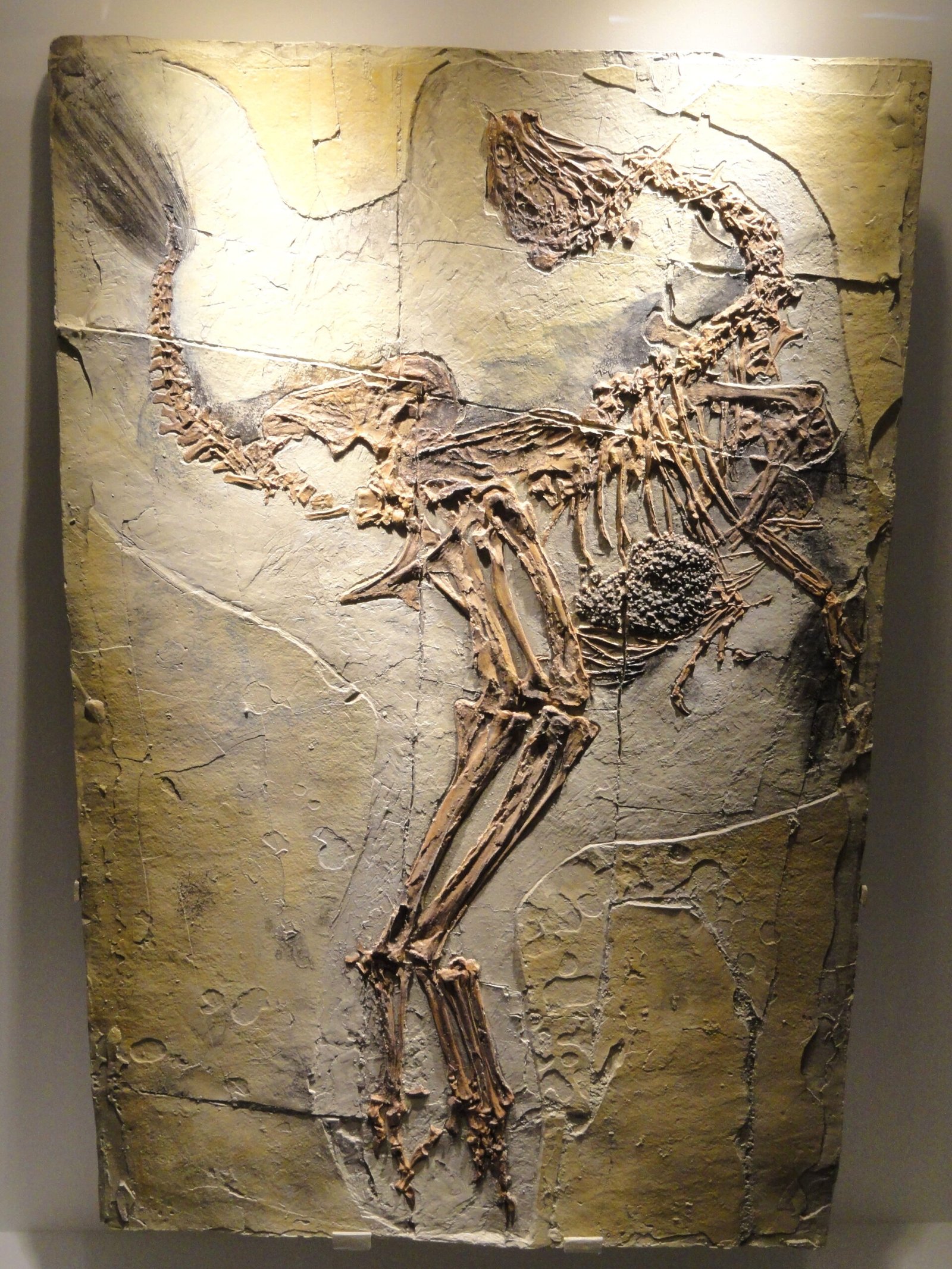Dive into the fascinating world of oviraptorosaurs, a group of remarkable dinosaurs within the Oviraptoridae family. These ancient creatures have long captivated scientists and enthusiasts alike, primarily due to their intriguing behaviors, unique physical characteristics, and, of course, their strong association with eggs.
The name “Oviraptorosauria” might conjure images of ruthless egg-stealers, but this group of dinosaurs is far more complex than their infamous reputation suggests. Their name itself is misleading. Initially, Oviraptorosaurs were believed to be egg thieves due to the discovery of a specimen perched over a nest, leading scientists to conclude that it was stealing the eggs.

However, paleontologists have also unearthed evidence of nesting behaviors propose that oviraptorids likely brooded and protected their eggs, similar to modern birds, providing warmth and protection until hatching.
Oviraptorosaurs were a diverse group of small to medium-sized theropod dinosaurs. Most of them lived 70 to 66 million years ago. And they were fast runners.

Oviraptor by PaleoNeolitic, CC BY 4.0

Cassowaries and oviraptors, despite being from different evolutionary branches and having existed millions of years apart, share some intriguing similarities.
Crest/Casque: One of the most noticeable similarities is the presence of a bony crest or casque on their heads. In cassowaries, this casque is a structure on top of their heads, while in many oviraptors, it was a bony crest believed to be used for display or possibly headbutting rivals or attracting mates.
Egg-laying Behavior: Both cassowaries and oviraptors are or were egg-laying species. Oviraptors were dinosaurs known for their apparent brooding behavior, often depicted sitting on nests, likely incubating their eggs. Cassowaries, in comparison, also have significant involvement in nest building and egg incubation.
Feeding Habits: Although their diets differ (cassowaries are omnivorous while oviraptors were likely omnivorous or herbivorous), both species are believed to have had a similar feeding behavior. Oviraptors are thought to have used their beaks to probe for food, possibly including eggs, small prey, or plants. Cassowaries use their powerful beaks to forage for fruits, insects, small vertebrates, and even small reptiles or amphibians.
Clawed Limbs: Both cassowaries and some species of oviraptors had formidable claws on their limbs. In the case of oviraptors, particularly the species like Oviraptor philoceratops, their forelimbs ended in a powerful, curved claw, leading to initial misconceptions that they were egg thieves (a notion that has since been largely debunked).
These similarities, though fascinating, are a result of convergent evolution rather than direct lineage. Cassowaries belong to modern avian species, while oviraptors were non-avian dinosaurs that lived millions of years ago. Despite this evolutionary separation, their shared traits show how different species can independently evolve similar characteristics to adapt to their environments and ecological niches.
Oviraptor, name giving for the Oviraptorsaurs, was a small to medium-sized dinosaur, approximately 1.5 to 2 meters long. It had a beak-like snout, a crest on its head, and a toothless beak, indicating that it was likely an omnivorous dinosaur. Its fossils have been found in Mongolia, and some specimens were preserved in a nesting position, leading to the initial misconception that Oviraptor was an egg thief.

Oviraptor by PaleoNeolitic, CC BY 4.0
Citipati is another genus from Oviraptorosauria. It was similar in size to Oviraptor, with a length of around 2 meters. Citipati had a bird-like appearance and is known for its well-preserved fossils found in Mongolia. Like Oviraptor, Citipati has a large crest on its head. And like Oviraptor, it was initially thought to be an egg thief due to the discovery of fossils in nesting positions. However, it is now believed that Citipati, like Oviraptor, was brooding and caring for its eggs.

Citipati by PaleoNeolitic, CC BY 4.0
Avimimus is another member of Oviraptorosauria and is found in Mongolia. It was a small, bird-like dinosaur measuring about 1.5 to 2 meters long. Avimimus means “bird mimic,” reflecting its bird-like characteristics, and it likely had a diet consisting of insects, small vertebrates, and plants, like all Oviraptorosauria.

Avimimus by Matt Martyniuk, CC BY-SA 3.0
Caudipteryx: Caudipteryx was discovered in China and lived around 120 million years ago, making it one of the oldest members of the Oviraptorosauria group. It was also the smallest member, measuring about 1.2 meters in length.
Caudipteryx had long arms and hands with three fingers, suggesting it was capable of grasping objects. Although it had teeth, Caudipteryx likely had an omnivorous diet, feeding on both plants and small animals.

Caudipteryx Fossil
Gigantoraptor: The gigantoraptor lived 96 million years ago in Mongolia and was one of the largest known members of the oviraptorosaur group, reaching lengths of up to 8 meters and weighing several tons.

Gigantoraptor by PaleoNeolitic, CC BY 4.0
One of the most remarkable features of Oviraptorosaurs is their well-preserved fossil evidence of feathers. These discoveries have revolutionized our understanding of dinosaur plumage, indicating that feathers were not limited to the well-known theropod groups Dromaeosaurs.
While the misconception of Oviraptorosaurs as egg thieves has been debunked, their true behavior and dietary habits remain subjects of scientific investigation. Recent findings suggest that they were omnivorous, consuming a wide range of food sources including plants, small vertebrates, and invertebrates. This diverse diet could have been facilitated by their unique beak-like jaws, which were highly specialized for different feeding strategies.
As with any field of science, our understanding of Oviraptorosaurs is continually evolving, thanks to ongoing research and new discoveries. Paleontologists are engaged in a quest to uncover more fossil specimens, hoping to gain further insights into their diversity, evolution, and behavior.